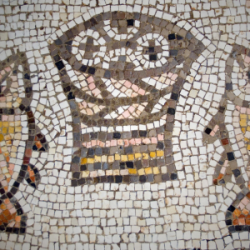Christians know why Jesus died: He died for our sins. That's what we're taught from the earliest days of Sunday school.
And we all know how he died: A particularly gruesome form of public execution known as crucifixion.
But many Christians are less sure of how it works. How is it that Jesus' death accomplishes the forgiveness of my sin? By what cosmic mechanism does that take place?
In other words, there comes a time in every Christian's life when the Sunday School answer, "Jesus died for my sins," falls short. We want to know how it works.
You'd think that this is among the most central of all Christian doctrines to work out. And, indeed, much ink has been spilled, and many pixels typed, regarding this doctrine, called the "atonement" by theologians. But it's also worth noting that never in the 2,000-year history of the church has one's take on the atonement been a matter of orthodoxy versus heresy. Never was it the subject of an ecumenical council, nor was it ever enshrined in an early church creed.
That historical reality affords us some latitude to consider the major ways that Christians have understood the atonement over the years, and to ponder some minority opinions as well. In each, the crucifixion is the solution. Where they differ is the problem. In other words, what is the problem that the crucifixion solves?
The First Majority Opinion
For the first millennium of the church, a particular view of the atonement held sway. In this take—alternatively called "ransom captive" and Christus victor—the problem is Satan. When Eve and Adam ate the forbidden fruit and were cast out of the garden, this theory goes, humanity was given over to the Devil, and he held us hostage for generations. Eventually, God struck a deal with the Devil, giving his own Son over in our stead. We were released and Jesus was killed. But—surprise!—God played a trick on Satan when Jesus rose on Easter morning. God got to have his cake (reunion with humanity) and eat it too (resurrection of his Son).
If this take on the crucifixion sounds familiar, that's because it was enshrined by C.S. Lewis in The Lion, the Witch, and the Wardrobe. Substitute Edmund for humanity, Turkish Delight for the fruit of the Garden, the White Witch for Satan, and Aslan for God/Jesus, and you've got the cast. Aslan offers himself as a ransom for Edmund and is slaughtered on the Stone Table (read, Cross).
But this explanation of the atonement is rife with problems, not least of which is that, in the Narnia version, Aslan is bound by a "deep magic from the dawn of time." It's a pretty weak God who has to obey arbitrary rules like that. And it seems highly unlikely that God would have to negotiate with the Devil for anything.
The Second Majority Opinion
For these reasons, a new version of the atonement rose to prominence about 1,000 years ago. This theory, called "substitutionary atonement," posits that the problem isn't Satan, it's sin.
In this account, when Eve and Adam ate the fruit, they committed a mortal crime. Their rebellion against God was punishable by death, and they lost their immortality. Every subsequent human being has been guilty of the same crime, and each of us has been sentenced to death.
But it's not just physical death. God's sense of justice is perfect, this theory postulates, so God cannot possibly allow a sinful being into his eternal presence in heaven. Thus, we're not only sentenced to die, we're also sentenced to an eternity in hell.
In fact, the offense to God is so great that the debt can only be paid by a perfect, sinless being, and there's only one being in all of creation who fits the bill. So God's Son descends to Earth and pays the price for all of us by dying on the cross. Jesus acts as a substitute for humanity, standing between us and God and absorbing the wrath and punishment that should rightfully be ours.
The substitutionary interpretation of the atonement has problems, too. For one, it binds God to a sense of law and justice; if God is subservient to a legal code of crime and punishment, then the legal code itself becomes God. And for another, the Son is demoted to a junior partner of the Trinity, merely doing the Father's bidding. This has led some theologians to characterize this theory as "divine child abuse."
Minority Opinions
Recently, alternative understandings of the atonement have been proposed. French anthropologist René Girard sees the sacrificial systems of primitive religions as a release valve in human society. We want what others have; that leads to rivalries; and that leads to violence. In ancient religions, humans regularly laid their sins on an innocent victim and slaughtered it, hoping the blood would appease the angry gods.




